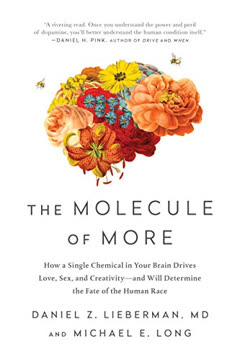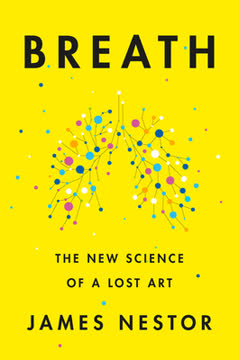Key Takeaways
1. Aging is a disease that can be treated, not an inevitable part of life
Aging, quite simply, is a loss of information.
Paradigm shift. The conventional view of aging as an inevitable decline is being challenged by scientific discoveries. Aging exhibits hallmarks of a disease: it limits quality of life, has specific pathology, and impacts physical and cognitive function. Unlike other diseases, aging affects everyone, which has historically excluded it from disease classification. However, this perspective is changing as research reveals the underlying mechanisms of aging.
Treatable condition. Recognizing aging as a treatable condition opens up new avenues for research and intervention. By targeting the root causes of aging, rather than individual age-related diseases, we can potentially prevent or delay a wide range of health issues simultaneously. This approach could revolutionize healthcare, shifting focus from treating symptoms to maintaining overall health and vitality throughout life.
2. The Information Theory of Aging: Loss of epigenetic information drives aging
There are no biological, chemical, or physical laws that say we must age.
Epigenetic noise. The Information Theory of Aging posits that aging results from the loss of epigenetic information over time. This loss leads to cellular dysfunction and the various hallmarks of aging. Unlike genetic information, which remains largely intact throughout life, epigenetic information is more susceptible to degradation.
Survival circuit. This theory is rooted in an ancient cellular survival mechanism that evolved billions of years ago. When cells face stress or DNA damage, epigenetic regulators like sirtuins are recruited to repair the damage. However, this process can lead to epigenetic changes and loss of cellular identity over time. Understanding this mechanism provides a framework for developing interventions that can maintain or restore epigenetic information, potentially slowing or reversing aspects of aging.
3. Lifestyle interventions can activate longevity genes and slow aging
Eat less often.
Caloric restriction. One of the most well-established interventions for extending lifespan is caloric restriction without malnutrition. This practice activates longevity genes and cellular repair mechanisms. However, strict calorie restriction can be challenging to maintain long-term.
Practical approaches:
- Intermittent fasting: Limiting eating to specific time windows
- Exercise: Regular physical activity, especially high-intensity interval training
- Cold exposure: Brief periods of cold stress can activate brown fat and longevity pathways
- Plant-based diet: Reducing consumption of animal proteins and focusing on plant-based nutrients
These lifestyle interventions mimic aspects of caloric restriction and can activate similar longevity pathways without the need for severe dietary restrictions.
4. Emerging pharmaceuticals show promise in extending healthspan and lifespan
Prolonged vitality—meaning not just more years of life but more active, healthy, and happy ones—is coming. It is coming sooner than most people expect.
Rapamycin and metformin. These drugs, originally developed for other purposes, have shown potential in extending lifespan and healthspan in animal studies. Rapamycin inhibits the mTOR pathway, while metformin activates AMPK, both of which are involved in cellular energy regulation and longevity.
NAD boosters. Compounds like NMN (nicotinamide mononucleotide) and NR (nicotinamide riboside) can increase levels of NAD, a crucial molecule for cellular energy production and sirtuin activation. These molecules have shown promising results in animal studies, improving various aspects of health and potentially extending lifespan.
Senolytics. These drugs target and eliminate senescent cells, which accumulate with age and contribute to inflammation and tissue dysfunction. Removing these cells has shown remarkable effects in animal models, improving health and extending lifespan.
5. Cellular reprogramming may reverse aging and regenerate tissues
We didn't give the mice all of those ailments. We had given them aging.
Yamanaka factors. The discovery of cellular reprogramming factors by Shinya Yamanaka opened up new possibilities for reversing aging at a cellular level. These factors can reset the epigenetic state of cells, potentially restoring youthful function.
Partial reprogramming. Recent research has shown that carefully controlled, partial reprogramming can rejuvenate cells and tissues without causing them to lose their identity. This approach has demonstrated the ability to improve various aspects of health in animal models, including:
- Regenerating damaged tissues
- Improving organ function
- Reversing some aspects of aging
While still in early stages, this technology holds immense promise for regenerative medicine and treating age-related diseases.
6. Prolonged vitality will reshape society, economics, and human potential
How do you want to spend them? Will we follow the perilous path that ultimately leads to a dystopian doom? Will we band together to create a world that exceeds our wildest utopian dreams?
Societal impact. Extended healthspans will fundamentally change how we structure our lives, careers, and societies. Traditional concepts of retirement, education, and work will need to be reimagined to accommodate longer, healthier lives.
Economic implications:
- Reduced healthcare costs as age-related diseases are delayed or prevented
- Increased productivity as people remain healthy and active for longer
- New industries and job opportunities in longevity-related fields
Human potential. With more healthy years, individuals will have greater opportunities for personal growth, learning, and achievement. This could lead to accelerated scientific and cultural advancements as experienced individuals continue to contribute to society.
7. Ethical considerations and societal adaptations are crucial as lifespans increase
We need to begin the process of developing the cultural, ethical, and legal principles that will allow that to happen.
Ethical challenges. Extended lifespans raise numerous ethical questions that society must grapple with:
- Equitable access to life-extending technologies
- Overpopulation and resource allocation
- The right to choose when to end one's life
- Intergenerational equity and power dynamics
Societal adaptations. To fully realize the benefits of extended healthspans, societies will need to adapt in various ways:
- Reforming social security and healthcare systems
- Reimagining education as a lifelong process
- Developing new models for work and retirement
- Addressing environmental concerns to ensure a sustainable future
Proactively addressing these challenges and adapting our institutions will be crucial to creating a positive future with extended lifespans.
Last updated:
FAQ
What's Lifespan: Why We Age – and Why We Don’t Have To about?
- Exploration of Aging: The book explores the biological mechanisms of aging, presenting it as a disease that can be treated rather than an inevitable process.
- Information Theory of Aging: David A. Sinclair introduces the Information Theory of Aging, suggesting that aging results from a loss of biological information, particularly at the epigenetic level.
- Practical Interventions: It outlines interventions like dietary changes, exercise, and compounds such as NAD boosters that can potentially slow or reverse aging.
Why should I read Lifespan: Why We Age – and Why We Don’t Have To?
- Cutting-Edge Research: The book presents groundbreaking research in the field of aging, making it essential for those interested in health and longevity.
- Empowering Perspective: Sinclair offers a hopeful message that aging can be managed and even reversed, challenging traditional views.
- Practical Advice: Readers receive actionable advice on lifestyle changes that can enhance longevity, including dietary practices and exercise regimens.
What are the key takeaways of Lifespan: Why We Age – and Why We Don’t Have To?
- Aging as a Disease: Sinclair argues that aging should be viewed as a treatable disease, opening new avenues for research and intervention.
- Role of Sirtuins: The book highlights the importance of sirtuins, proteins that regulate cellular health and longevity, and how activating them can combat aging.
- NAD and Longevity: Sinclair discusses the significance of NAD in cellular processes and its decline with age, suggesting that boosting NAD levels can promote healthier aging.
What is the Information Theory of Aging in Lifespan?
- Loss of Information: The theory posits that aging is caused by a loss of biological information, particularly at the epigenetic level, leading to cellular dysfunction.
- Epigenetic Changes: Sinclair explains that chaotic epigenetic changes contribute to aging, and maintaining epigenome stability is crucial for healthy aging.
- Potential for Reversal: By restoring lost information and stabilizing the epigenome, aspects of aging may be reversible, opening possibilities for new treatments.
What are sirtuins, and why are they important in Lifespan?
- Key Proteins for Longevity: Sirtuins are proteins that regulate cellular processes, including DNA repair and metabolism, playing a critical role in promoting longevity.
- Activation Mechanisms: They can be activated through caloric restriction, exercise, and compounds like resveratrol, enhancing the body's ability to repair damage.
- Impact on Aging: Sirtuin activity declines with age, contributing to aging, but boosting their activity can potentially slow or reverse aging effects.
What role does NAD play in aging according to Lifespan?
- Essential Coenzyme: NAD is crucial for energy metabolism and cellular repair, with levels declining as we age, impacting overall health.
- Boosting NAD Levels: Sinclair emphasizes maintaining NAD levels through diet, exercise, and supplements like NMN, which can enhance sirtuin activity.
- Health Benefits: Increasing NAD levels improves health markers, including metabolic health and cognitive function, promoting healthier aging.
What specific methods does David A. Sinclair recommend for extending lifespan in Lifespan?
- Caloric Restriction: Sinclair advocates for reducing caloric intake without malnutrition to activate longevity genes and improve health.
- Intermittent Fasting: This approach mimics caloric restriction effects, activating survival circuits and promoting cellular repair.
- Exercise: Regular physical activity is essential for maintaining health and longevity, activating longevity genes and improving well-being.
How does Lifespan address the concept of senescence?
- Definition of Senescence: Senescent cells, or "zombie cells," no longer divide but cause inflammation and tissue damage, accumulating with age.
- Senolytics: The book discusses senolytic drugs that aim to eliminate senescent cells, improving health and extending lifespan in models.
- Impact on Aging: Targeting senescence is crucial for combating aging, as reducing senescent cells can enhance health and vitality.
What lifestyle changes does Lifespan recommend for longevity?
- Intermittent Fasting: Sinclair advocates for fasting to activate cellular repair processes and enhance autophagy, cleaning out damaged cells.
- Exercise: Regular physical activity, including high-intensity interval training, is emphasized for maintaining health and extending lifespan.
- Dietary Adjustments: A diet rich in plant-based foods and low in processed sugars is recommended to support sirtuin activity and cellular health.
What is the significance of mTOR inhibition in Lifespan?
- mTOR's Role in Aging: Overactivation of mTOR is linked to aging and age-related diseases, making it a target for longevity interventions.
- mTOR Inhibitors: Compounds like rapamycin mimic caloric restriction effects, potentially extending lifespan by enhancing autophagy.
- Health Benefits: Inhibiting mTOR may improve cellular health and lead to better health outcomes as we age.
How does Lifespan view the future of aging research?
- Optimistic Outlook: Sinclair is confident that advancements in aging research will lead to significant breakthroughs in extending healthy life.
- Interdisciplinary Collaboration: Collaboration across scientific fields is crucial for tackling aging complexities, integrating genetics, biology, and medicine.
- Ethical Considerations: Sinclair urges society to consider the ethical implications of extending life, advocating for responsible research benefiting all humanity.
What are the challenges in aging research discussed in Lifespan?
- Funding Limitations: Aging research often receives less funding compared to specific diseases, necessitating increased investment in understanding aging.
- Public Perception: Societal attitudes towards aging can hinder research progress and acceptance of new therapies, requiring a narrative shift.
- Regulatory Hurdles: Current regulatory frameworks may not recognize aging as a disease, posing challenges for developing anti-aging therapies.
Review Summary
Lifespan receives mixed reviews, with ratings ranging from 2 to 5 stars. Many readers find the scientific content on aging and longevity fascinating, praising Sinclair's optimistic outlook and groundbreaking research. However, some criticize the book for being overly speculative, self-promotional, and lacking depth in certain areas. Readers appreciate the practical advice on extending healthspan but are divided on the societal implications discussed. Overall, the book is seen as thought-provoking but controversial in its claims about potentially reversing aging.
Similar Books










Download PDF
Download EPUB
.epub digital book format is ideal for reading ebooks on phones, tablets, and e-readers.




